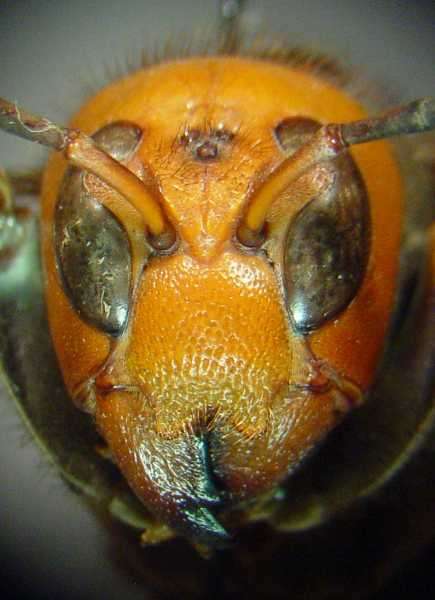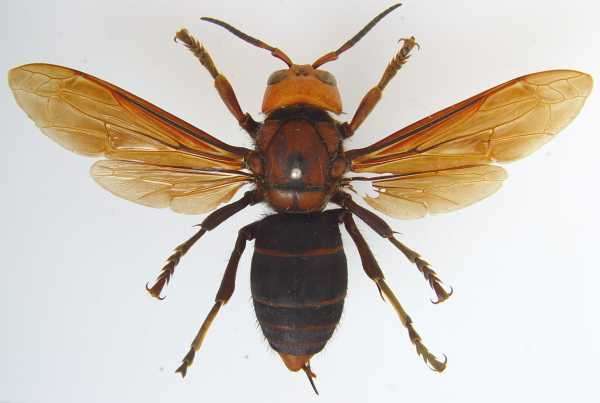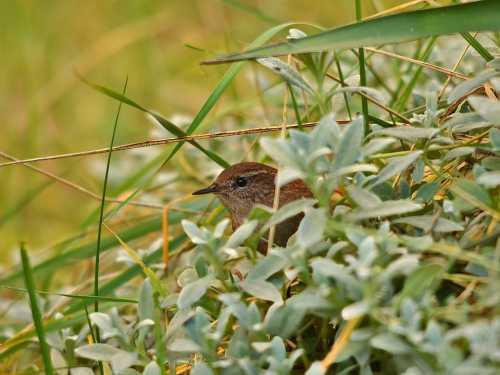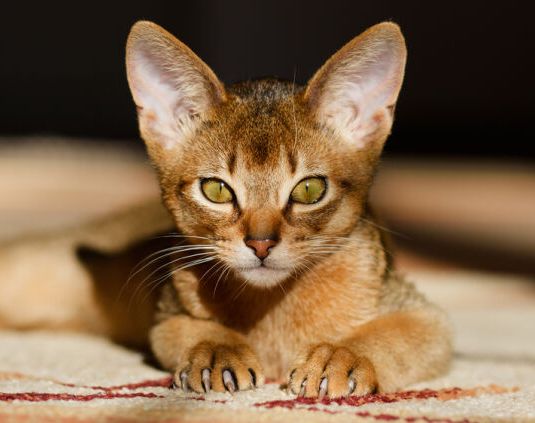
An image taken by James Carpenter, an American Museum of Natural History researcher and coauthor of the new paper, shows the distinctive face of a murder hornet.
So-called “murder hornets” have arrived in the United States.
The Asian giant hornet species (Vespa mandarinia) is a large social wasp about 2 inches long that has recently been spotted in Washington. The hornets sport orange heads, orange stripes and a pointed rear end with a big curved stinger. Native to eastern and Southeast Asia, they prey on honey bees — ripping them to pieces — and kill a few dozen people a year with their painful stings.
But how do you know if you’ve found one?
In a new paper published May 9 in the journal Insect Systematics and Diversity, a trio of researchers gathered data on V. mandarinia and its close cousins in the Vespa wasp genus and put together a handy visual guide.
“Hornets in the genus Vespa are large, predatory, eusocial wasps native to Europe and Asia,” the researchers wrote. “They prey on a wide diversity of insects, but several species are predatory on honeybees. Vespa nests can be physically large, with over 1,000 workers, but usually with hundreds of workers.”
Many Vespa species other than V. mandarinia have turned up outside their native ranges, the researchers reported, including some popping up in North America. Many Vespa wasps look alike, with big, chubby, striped bodies. (Wasps in other genuses can look quite different.)
In Europe, for example, an invasive Vespa species known as V. velutina arrived from its native Asian environment (possibly in some Chinese pottery) and has since hunted honeybees and other pollinators, harming ecosystems that rely on those species. The wasp is also potentially deadly to anyone allergic to its stings. You can distinguish V. velutina from other Vespa wasps by its “distinctive yellow tarsi” (lower legs) and a “velvety appearing dark brown to black thorax [middle section] and metasoma [rear section],” the researchers wrote.
V. velutina, meanwhile, is only subtly different from V. crabro, a species that’s native to Europe (and protected in Germany). The clearest difference? Unlike V. velutina, V. crabro has yellow markings on its rear end. (V. crabro is an invasive species in New York and other parts of North America.)
One challenge with identifying species by color alone is that within Vespa species, it’s common to find different color markings in different regions. Photos are available in the paper to help confirm sightings.
V. mandarinia, the “murder hornet” species, sports yellowish and orangeish stripes on its rear end in images the researchers collected, as well as a black thorax and a distinctive orange face. Found in India, Sri Lanka, Bhutan, Nepal, Myanmar, Thailand, Laos, Vietnam, Malaysia, Malaya, China, Hong Kong, Taiwan, eastern Russia, Korea, Japan — and now the Pacific Northwest — it also has a characteristic tendency to nest underground in mammal burrows and the cavities left behind by decaying plant roots, the researchers reported, “enlarging them as the colony develops.”

Unless you’re a wasp expert, you probably can’t confirm any wasp identifications from this paper alone. But if you’ve found a wasp that you suspect might be a “murder hornet,” the new guide is a good place to start. Next, look for instructions from universities and local government offices on how to report invasive species. The Washington State Department of Agriculture has a website for reporting possible sightings and sharing photos of possible murder hornets, and provides images of similar-looking insects native to the area (like thin paper wasps, black and white bald-faced hornets, yellowjackets and elm sawflies).
Sourse: www.livescience.com





